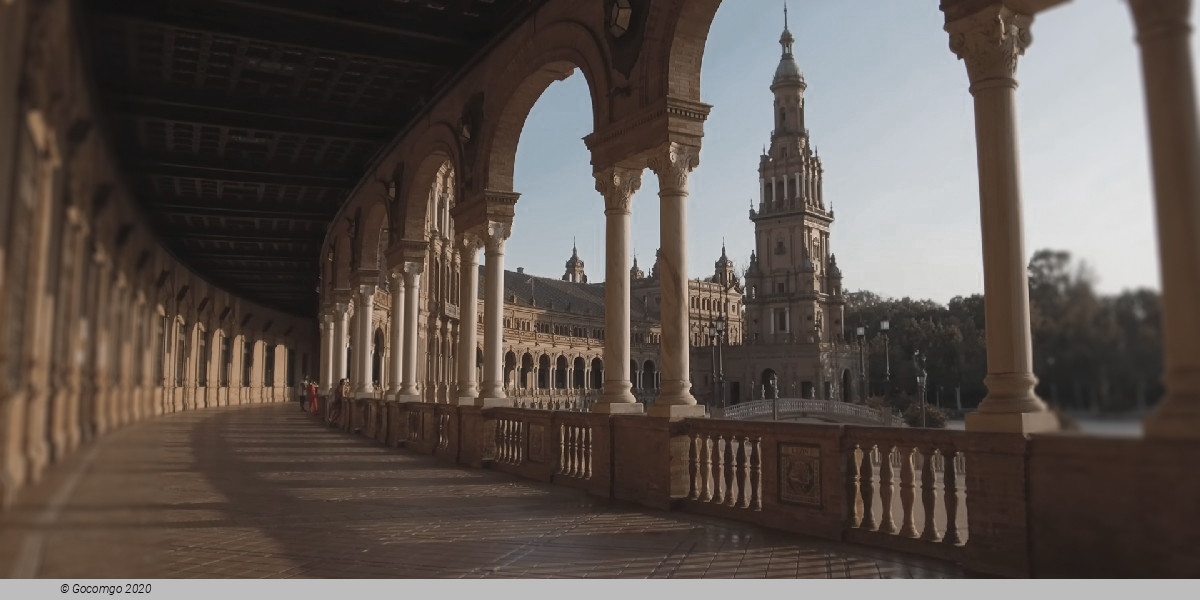Seville

Seville is the capital of the autonomous community of Andalusia in southern Spain. It is known as the birthplace of flamenco dance, centered in the Triana district. The main attractions of the city are the richly decorated Alcazar fortress, built during the reign of the Moorish dynasty of the Almohads, and the Maestranza bullring of the 18th century. The Gothic-style Seville Cathedral, which houses the tomb of Christopher Columbus, is famous for its Giralda bell tower, which originally served as a minaret.
Seville is a big tourist centre in Spain. In 2018, there were over 2.5 million travellers and tourists who stayed at a tourist accommodation, placing it third in Spain after Madrid and Barcelona. The city has an overall low level of seasonality, so there are tourists year-round. There are many landmarks, museums, parks, gardens and other kinds of tourist spots around the city so there is something for everyone.
The Alcázar, the Cathedral, and the Archivo General de Indias (General Archive of the Indies) are UNESCO World Heritage Sites.
The most important art collection of Seville is the Museum of Fine Arts of Seville. It was established in 1835 in the former Convent of La Merced. It holds many masterworks by Murillo, Pacheco, Zurbarán, Valdés Leal, and others masters of the Baroque Sevillian School, containing also Flemish paintings of the 15th and 16th centuries.
The Teatro Lope de Vega is located on Avenida de María Luisa avenue (next to Parque de María Luisa). It was built in 1929, being its architect Vicente Traver y Tomás. It was the auditorium of the pavilion of the city in the Ibero-American Exhibition. This pavilion had a large room that became the Casino of the Exhibition. The theater occupied an area of 4600 m2 and could accommodate 1100 viewers. Its architecture is Spanish Baroque Revival, being the building faithful to this style both in the set and in its ornamentation.
It has hosted varied performances, including theater, dance, opera, jazz, and flamenco and nowadays the most outstanding of the panorama is its programming national and international, becoming one of the most important theaters in Spain.
Others important theatres are Teatro de la Maestranza, Auditorio Rocío Jurado and Teatro Central.
Seville also has a corral de comedias theatre, which is the Corral del Coliseo, now used as a residential building.
There are many entertainment options around the city of Seville and one of its biggest attractions is the numerous festivals that happen around the year. Some of the festivals concentrate on religion and culture, others focus on the folklore of the area, traditions, and entertainment.
The Triana district in Seville is considered a birthplace of flamenco, where it found its beginning as an expression of the poor and marginalized. Seville's Gypsy population, known as Flamencos, were instrumental in the development of the art form. While it began as and remains a representation of Andalusian culture, it has also become a national heritage symbol of Spain. There are more flamenco artists in Seville than anywhere else in the country, supporting an entire industry surrounding it and drawing in a significant amount of tourism for the city.
The tapas scene is one of the main cultural attractions of the city: people go from one bar to another, enjoying small dishes called tapas (literally "lids" or "covers" in Spanish, referring to their probable origin as snacks served on small plates used to cover drinks).

